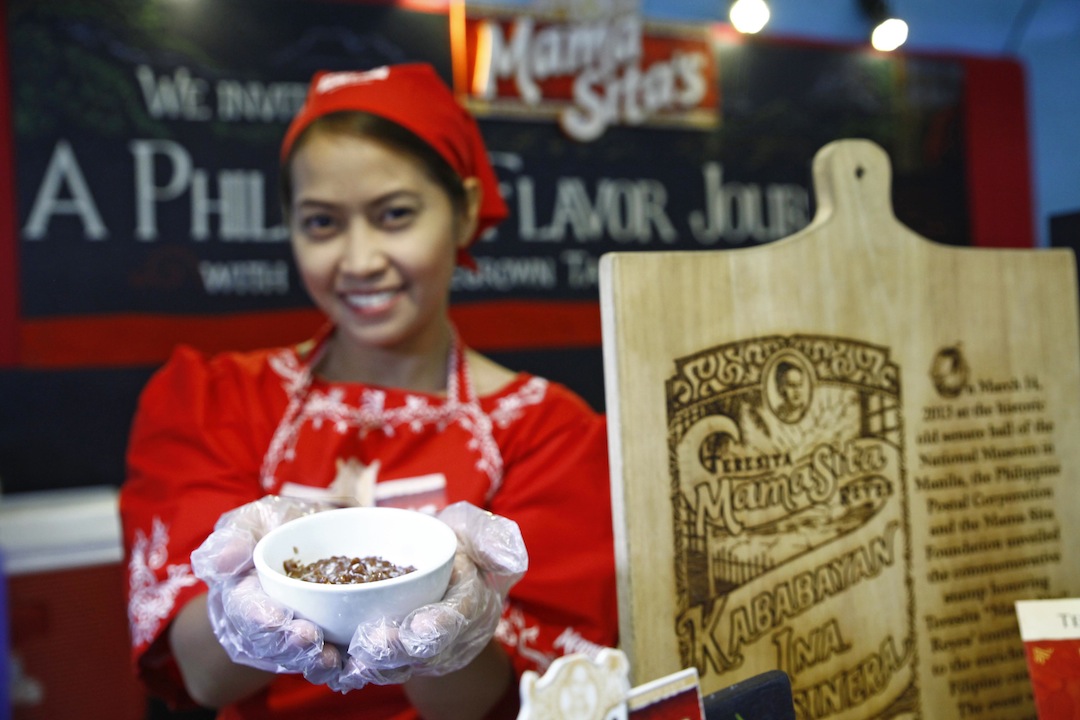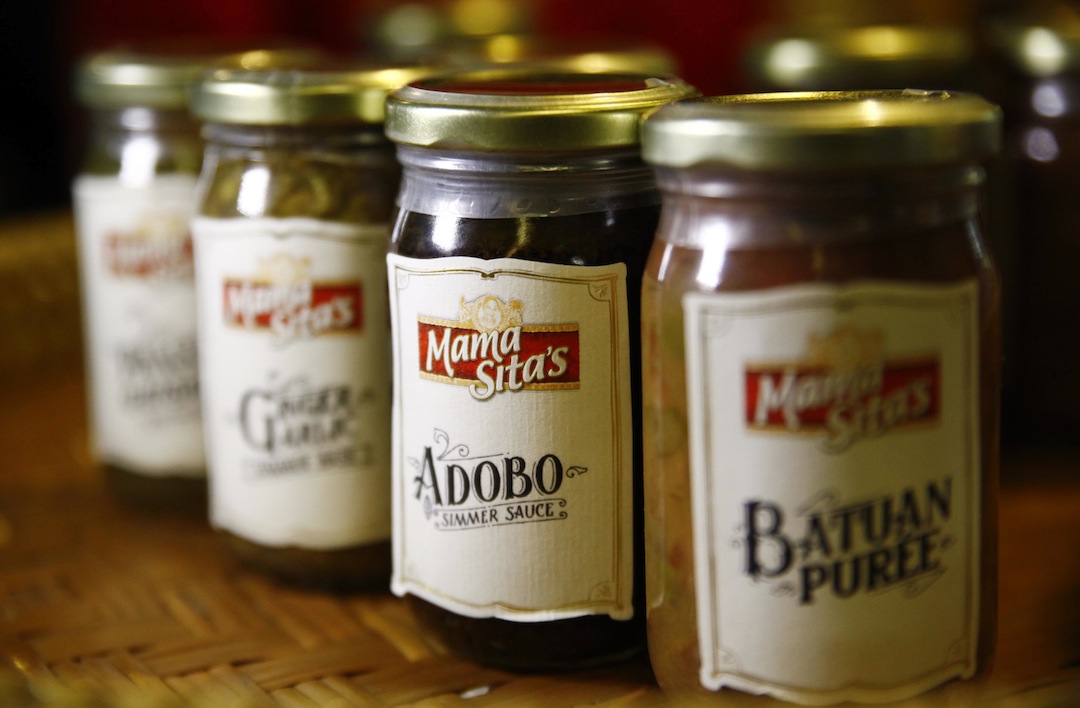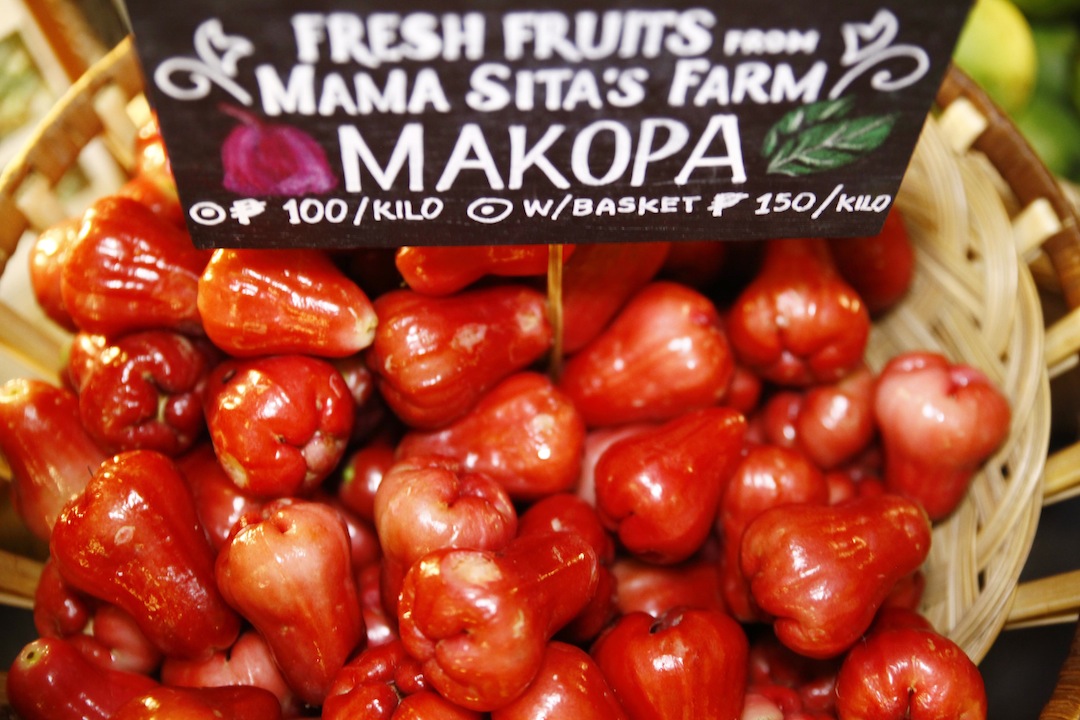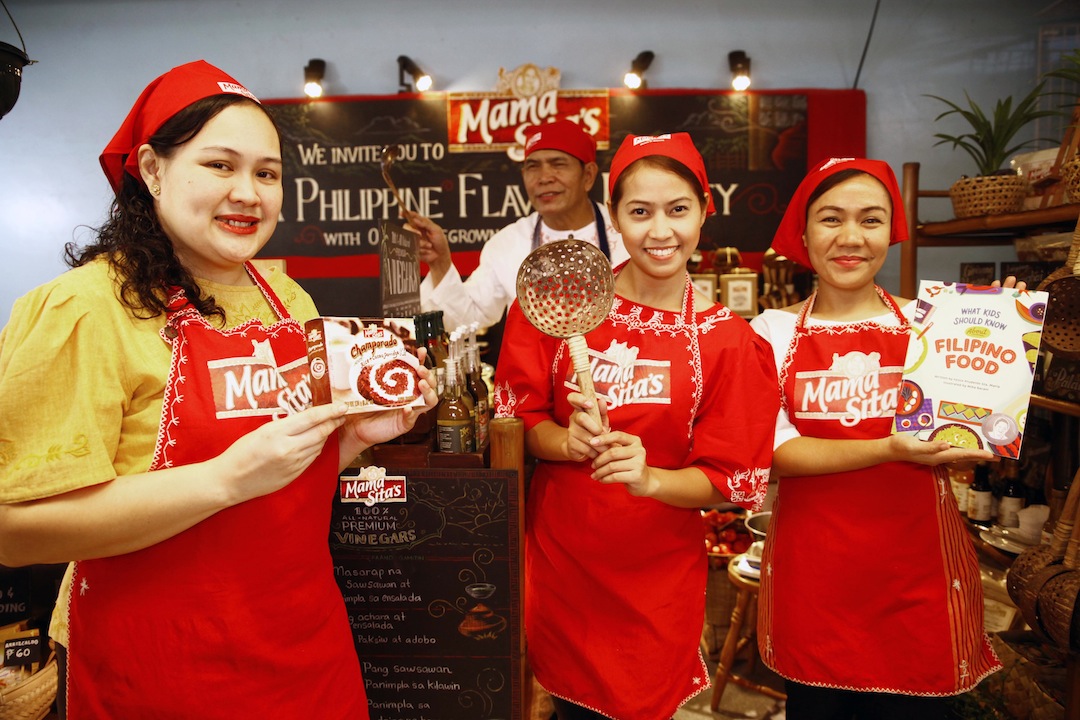
For decades, Mama Sita has been the trusted go-to brand for condiments to complement your meals, and even viand mixes that lets us savor authentic Filipino home-cooked food.
An iconic local brand with a legacy that spans five generations on its belt, Mama Sita’s main mission is to bring Philippine flavors to the world.
This vision started with Teresita “Mama Sita” Reyes—daughter of the Doña Engracia “Asiang” Reyes, the the woman behind the famed The Aristocrat Restaurant—when she noticed in her travels abroad that some Filipinos are missing the taste of home.
This led to a collaboration with her daughter and son-in-law, which brought about the line of mixes and sauces Filipinos around the globe have grown to love today, including its kare-kare (peanut sauce) mix and sinigang(tamarind soup) mix among others.

Mama Sita’s efforts to shed light on Filipino cuisine also extended from food products to coming up with cookbooks that explore cooking traditions for home cooks, schools, and libraries.
From its secret to success as an iconic 50-year-old Filipino brand to future products and campaigns that the brand is cooking up, Mama Sita Foundation President and Mama Sita’s daughter Clara Reyes-Lapus answered them all in a recent interview with InterAksyon.
Mama Sita’s legacy spans from five generations already. How does the brand remain successful over the years both locally and globally?
Clara Reyes-Lapus: Mama Sita’s legacy was not created overnight. It’s the fruit of five generations of hard work, cooperation, passion, and desire to reach out to kababayans (fellow Filipinos) all over the world.
In all our endeavors, we strive to adhere to Mama Sita’s values as a real person—isang ina, kababayan, kusinera a mother, a fellow Filipino, a cook). Her life was a testament to the power of wholesome home-cooked food in bringing a family together. We aim for consistency and integrity in our products because Mama Sita would cook with the freshest ingredients from the market.
We want to continue what she started. We know we are on track because of the heartening feedback from our patrons—both those who have been with us since the beginning and those who have just recently discovered our products—who appreciate our products and what we do. Mama Sita’s values resonate to anyone, whether they are here or abroad.
Tell us the secret ingredient to your success and how does the brand remain commit to its vision?
Over the years, we have remained committed to product integrity and sustained efforts in showcasing the best of the Philippines’ local produce and culinary traditions. Mama Sita made it her mission to bring Philippine flavors to the world and we seek to carry on this mission by following in her footsteps.

How does Mama Sita’s stay relevant in bringing local, Filipino flavors to the global market?
Pioneering in the Filipino spices and sauces industry, we are committed to the legacy of Mama Sita’s in bringing the best of the Philippines to the world. Mama Sita’s has made it possible for people—especially Filipinos abroad missing the home-cooked food, to cook wholesome Filipino food wherever they may be in the world, and for non-Filipinos to explore our flavors. Back in the day, it was nearly impossible to cook sinigang using real green tamarind pulp in the US. But nowadays, Filipino migrants can cook it every day at home using Mama Sita’s Sinigang Tamarind Soup Base.
Mama Sita had so much self-confidence that her brand would reach the farthest places on the planet. She was never shy to “patikim” (let others taste) palabok, adobo, kare-kare, caldereta, sinigang, tocino everywhere, to any race and they did enjoy what she cooked as much as her own children and grandchildren did.
The merging of tradition and heritage and the use of technology, equipment, and know-how to produce the products that meet the global standards—that is the delicate balance that we always strive for.
What moves the brand to push for Philippine flavors to be known in the world?
Food is one way of keeping connected to the Filipinos of the diaspora. With Mama Sita’s Philippine flavors being accessible and known in the world, our kababayans, everywhere may find their own identity, reconnect with their past, and remain linked to their home country.
This has always inspired Mama Sita, the person, and the brand. It is a pride not just for our brand, but also for the country to be able to put our flavors on the world food map and be known for our food heritage.

Why do you think Filipino flavors have become a hit in the international food scene?
Philippine cuisine is so diverse that every culture can taste a bit of their home in it. Philippine flavors offer a unique diversity with the abundance of geologic activities enabling us to harvest fresh produce from the lands and seas influencing what we eat, and how we cook and eat. Perhaps that diversity combined with a rich culinary history of influences and evolution makes our flavors very interesting and appealing not just to the foreign palate but also to their consciousness.
Looking forward, what is the mission of Mama Sita in the coming years? How do you plan to achieve your next goals?
Our mission in the coming years is to make Filipino food and Mama Sita’s products more accessible in local markets and stores everywhere, allowing not just Filipinos but locals as well to enjoy our food and flavors.

Mama Sita’s is also coming up with books about Filipino food. What’s the goal behind this initiative? Do you have other projects coming up?
Mama Sita’s has a series of cookbooks on new and traditional Filipino recipes for the home cooks. We have donated some cookbooks to libraries and schools here and abroad, and are continuing to do so, with the hope of making our Filipino recipes and cooking traditions and methods be accessible to students, teachers and everyone curious about our cuisine.
Mama Sita Foundation also recently collaborated with Adarna House, and culinary historian and author, Felice Prudente Sta. Maria in coming up with the Mama Sita’s Centennial Edition of What Kids Should Know About Filipino Food. This book is a must read for everybody who wants to know more about our food heritage—not just kids. Tidbits of Mama Sita’s life and recipes are featured in the book, too.
In addition to this, we have an ongoing campaign on promoting and documenting regional Filipino food and celebrating our culinary heritage, with the help of our Tourism Promotions Board and Department of Tourism. This campaign is called “Mga Kuwentong Pagkain,” which encourages people from all walks of life, to share their unique food stories through a contest. Our aim is to shed light on the little-known food, and the best-kept secrets of all regions from Luzon to Mindanao.









